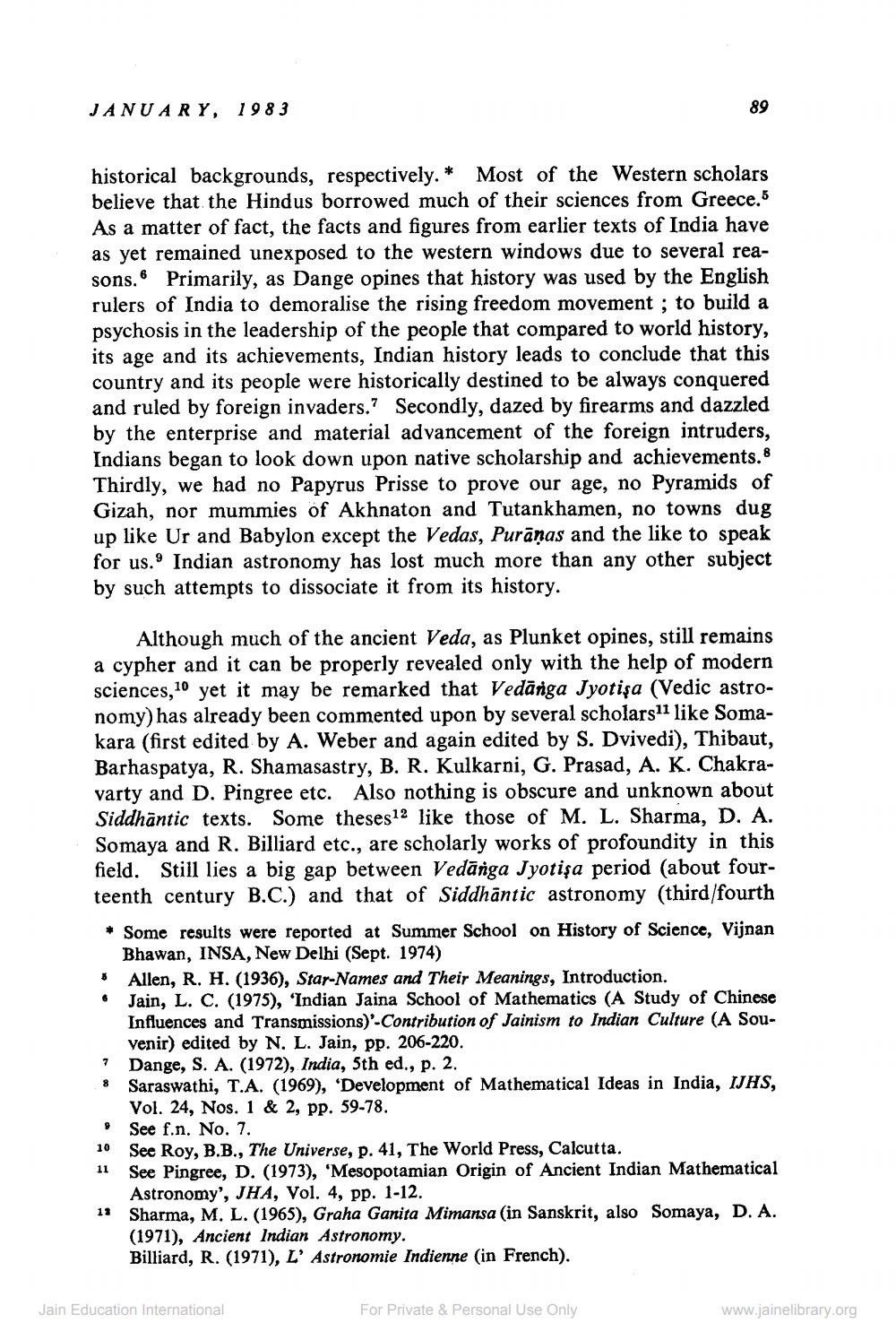________________
JANUARY, 1983
6
historical backgrounds, respectively. Most of the Western scholars believe that the Hindus borrowed much of their sciences from Greece.5 As a matter of fact, the facts and figures from earlier texts of India have as yet remained unexposed to the western windows due to several reasons. Primarily, as Dange opines that history was used by the English rulers of India to demoralise the rising freedom movement; to build a psychosis in the leadership of the people that compared to world history, its age and its achievements, Indian history leads to conclude that this country and its people were historically destined to be always conquered and ruled by foreign invaders." Secondly, dazed by firearms and dazzled by the enterprise and material advancement of the foreign intruders, Indians began to look down upon native scholarship and achievements.R Thirdly, we had no Papyrus Prisse to prove our age, no Pyramids of Gizah, nor mummies of Akhnaton and Tutankhamen, no towns dug up like Ur and Babylon except the Vedas, Puranas and the like to speak for us. Indian astronomy has lost much more than any other subject by such attempts to dissociate it from its history.
*
Although much of the ancient Veda, as Plunket opines, still remains a cypher and it can be properly revealed only with the help of modern sciences,10 yet it may be remarked that Vedānga Jyotişa (Vedic astronomy) has already been commented upon by several scholars11 like Somakara (first edited by A. Weber and again edited by S. Dvivedi), Thibaut, Barhaspatya, R. Shamasastry, B. R. Kulkarni, G. Prasad, A. K. Chakravarty and D. Pingree etc. Also nothing is obscure and unknown about Siddhantic texts. Some theses12 like those of M. L. Sharma, D. A. Somaya and R. Billiard etc., are scholarly works of profoundity in this field. Still lies a big gap between Vedānga Jyotişa period (about fourteenth century B.C.) and that of Siddhantic astronomy (third/fourth
89
* Some results were reported at Summer School on History of Science, Vijnan Bhawan, INSA, New Delhi (Sept. 1974)
6
5 Allen, R. H. (1936), Star-Names and Their Meanings, Introduction.
Jain, L. C. (1975), 'Indian Jaina School of Mathematics (A Study of Chinese Influences and Transmissions)'-Contribution of Jainism to Indian Culture (A Souvenir) edited by N. L. Jain, pp. 206-220.
7 Dange, S. A. (1972), India, 5th ed., p. 2.
8
Jain Education International
Saraswathi, T.A. (1969), 'Development of Mathematical Ideas in India, IJHS, Vol. 24, Nos. 1 & 2, pp. 59-78.
9 See f.n. No. 7.
10
See Roy, B.B., The Universe, p. 41, The World Press, Calcutta.
11 See Pingree, D. (1973), 'Mesopotamian Origin of Ancient Indian Mathematical Astronomy', JHA, Vol. 4, pp. 1-12.
12 Sharma, M. L. (1965), Graha Ganita Mimansa (in Sanskrit, also Somaya, D. A. (1971), Ancient Indian Astronomy.
Billiard, R. (1971), L' Astronomie Indienne (in French).
For Private & Personal Use Only
www.jainelibrary.org




